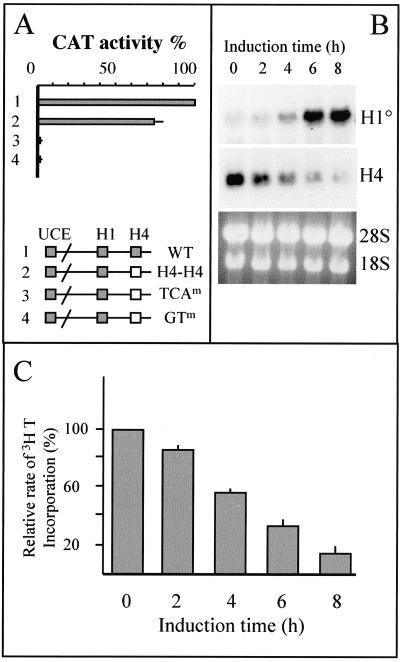FIG. 2.
(A) Histone H4 site II and H10 H4 box are functionally equivalent in proliferating cells. The H4 box from the Xenopus histone H10 gene promoter was replaced by the H4 site II sequence from a human histone H4 promoter (construct 2, H4H4). Conserved TCA and GT motifs in the H10 H4 box were replaced by GTC and AA, respectively (TCAm and GTm constructs). Construct 1 is the wild-type Xenopus histone H10 promoter. One microgram of each plasmid was used to transfect Cl6 cells; 48 h after transfection, CAT activity was measured. Plasmid uptake was controlled by Southern blot analysis of DNA extracted from transfected cells and hybridization with a 32P-labeled plasmid probe. The measured CAT activity was then normalized with respect to the plasmid uptake. Data are presented as percentage of the activity detected from the wild-type promoter, and bars indicate standard deviations of two independent experiments. (B) Different transcriptional activities of histone H4 and H10 genes during cell cycle exit in differentiating cells. B16 cells were induced to differentiate with 5 mM butyrate, and cells were taken at indicated times. A Northern blot containing these RNAs was probed successively with 32P-labeled H10 and H4 probes. The ethidium bromide-stained gel before the transfer of RNAs onto the membrane is also shown. (C) Early cell cycle exit after the induced differentiation of B16 cells. B16 cells were pulse-labeled with [3H]thymidine at the indicated times after the induced differentiation and analyzed; 100% represents [3H]thymidine incorporation in noninduced cells (means of three independent counts); bars indicate standard deviations.

